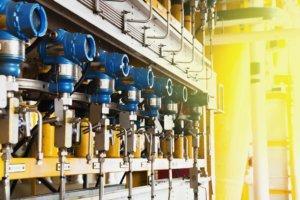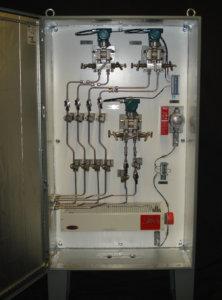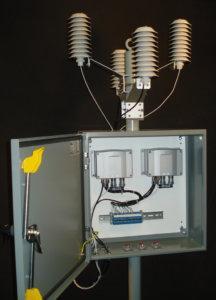
What is Electro-mechanical Assembly?
Electromechanical assemblies are composed of mechanical and electrical components designed to generate and/or control power flowing to various distribution systems. The term electromechanical assembly is also used to refer to anything containing mechanical and electrical components, such as control panels, box builds and power panel assemblies. Many high-tech devices require integration of electromechanical assemblies to function seamlessly, including satellite communications, green technology, military equipment, aerospace applications and medical devices.
How Do Electromechanical Devices Operate?
The field of electromechanics focuses on optimizing the synergy between mechanical systems and electrical systems. The electromechanical process is exemplified by power dissemination systems (AC and DC) and computer interfaces that demand the specialized functionality of electromechanical assemblies.
A classic example of an electromechanical device is the rotary converter, which converts AC to DC or DC to AC. Rotary converters consist of a rotating DC machine and a rotating AC machine. Both may operate as a generator or motor, depending on where the power flow is being directed. A rotary “phase” generator converter contains an electromechanical assembly (control panel) and an idle generator. It is the control panel that starts and stops the generator to sustain voltage balance between phases.

Who is Qualified to Provide Electromechanical Assembly Services?
Electromechanical assembly technicians typically earn a post-secondary certificate or associate’s degree in a wide variety of electro-mechanical assembly techniques. Skills provided by experienced technicians include:
- Reading schematics and blueprints to determine assembly sequence and optimal methods for assembly
- Inspecting electromechanical assembly parts for signs of defects
- Installing electronic and mechanical components using special hand tools, soldering equipment and industry-specific appliances
- Testing and evaluating performance parameters of finished electromechanical assemblies using oscilloscopes, bridges and voltmeters
- Ensuring completed assemblies conform to requested dimensions and precise specifications
An electromechanical assembly technician should possess superior expertise and extensive knowledge involving all facets of the assembly process. They must adhere to principles of consistency, accuracy and precision to give customers flawlessly performing products. That’s why Temp-Pro has earned a stellar reputation in the electromechanical assembly industry–we employ only the best technicians who consistently provide 100 percent customer satisfaction.
Common Types of Electro-mechanical Assemblies
DIN Rail Assemblies
Deutsche Institut für Normung (DIN) rail assemblies are metal strips meant for attachment of industrial and electrical control products (solenoids, terminal blocks, wiring and cable systems, actuators). DIN rails are widely utilized for their exceptional mechanical (physical) component support properties.
Switch and Sensor Assemblies
A sensor assembly is constructed to convert motion, heat, sound or light energy into one or more electrical signals. A switch assembly disconnects or connects electrical components to a power supply.
Transformer Assemblies
The transfer of electrical energy between at least two electrical circuits requires a transformer assembly. This type of electromechanical assembly will reduce or increase voltage levels according to what the application requires during present or future operations.

Summary of Electromechanical Assembly:
- An electromechanical assembly relies on two systems to generate energy: an electrical system and a mechanical system. Power is created when these two systems interact with each other.
- Components of electromechanical assemblies include wiring, terminals, switches and connectors.
- Power companies, medical equipment manufacturers, aerospace/military organizations, green energy producers and many other industries use electromechanical assemblies.
- Only certified electro-mechanical assembly technicians should be relied on to build top-quality, high-performing assemblies.
Contact Temp-pro For All Your Electromechanical Assembly Needs
Temp-pro’s electromechanical assembly services involve rigorous evaluation of steps leading to the fulfillment of customer orders. We carefully evaluate what a customer needs specifically through intense collaboration and then proceed to develop a master plan to achieve these needs. Temp-pro also uses LIE, LIR and other optimized enclosures to protect the most delicate instruments from environmental stress. Our dedication to product integrity ensures customers receive superior electromechanical assemblies that consistently exceed their expectations. Call today for more information about state-of-the-art electro-mechanical assembly techniques.

